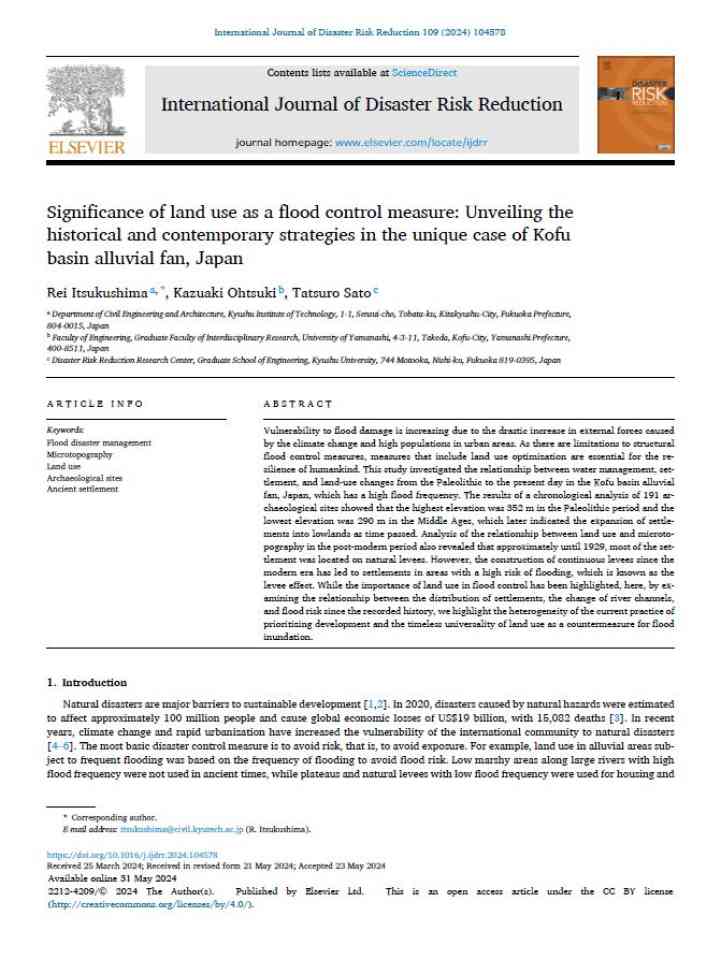Significance of land use as a flood control measure: Unveiling the historical and contemporary strategies in the unique case of Kofu basin alluvial fan, Japan
This study investigated the relationship between water management, settlement, and land-use changes from the Paleolithic to the present day in the Kofu basin alluvial fan, Japan, which has a high flood frequency. The results of a chronological analysis of 191 archaeological sites showed that the highest elevation was 352 m in the Paleolithic period and the lowest elevation was 290 m in the Middle Ages, which later indicated the expansion of settlements into lowlands as time passed. Analysis of the relationship between land use and microtopography in the post-modern period also revealed that approximately until 1929, most of the settlement was located on natural levees.
However, the construction of continuous levees since the modern era has led to settlements in areas with a high risk of flooding, which is known as the levee effect. While the importance of land use in flood control has been highlighted, here, by examining the relationship between the distribution of settlements, the change of river channels, and flood risk since the recorded history, we highlight the heterogeneity of the current practice of prioritizing development and the timeless universality of land use as a countermeasure for flood inundation.
Explore further

